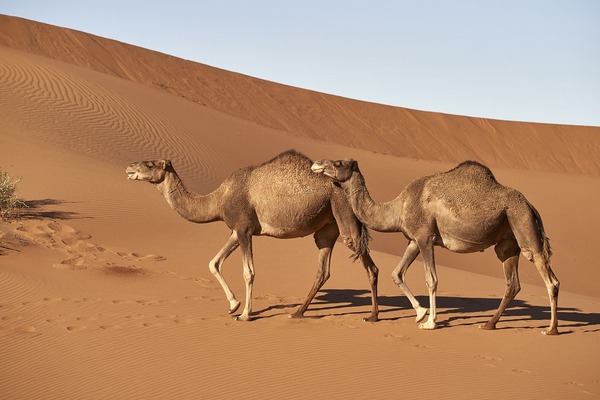Camels are often called the “ships of the desert” due to their incredible ability to survive in the harsh desert environment. One of the most common questions people ask about camels is: Can camels die from thirst in the desert? This question arises from the misconception that camels can go without water indefinitely. While camels are remarkably well-adapted to the desert, they do not possess an unlimited capacity for surviving without water. In this article, we will explore how camels manage to conserve water, how long they can survive without drinking, and whether they can actually die from dehydration in the desert.

Camels are equipped with a set of unique physiological adaptations that allow them to thrive in some of the hottest and driest conditions on Earth. Understanding these adaptations is essential to answering the question of whether camels can survive without water in the desert for extended periods.
Camels have evolved several key water conservation strategies to help them survive in the desert:
Specialized Kidneys and Urinary System: Camels’ kidneys are highly efficient at concentrating urine, which reduces water loss. Their urine can be as thick as syrup and has a very low water content, ensuring that the camel retains as much water as possible.
Body Temperature Regulation: One of the most remarkable survival traits of camels is their ability to tolerate extreme temperature fluctuations. They can allow their body temperature to rise and fall by several degrees, which helps them avoid sweating during the hottest parts of the day.
Fat Storage in the Hump: Contrary to popular belief, camels store fat in their humps, not water. This fat serves as an energy reserve. When metabolized, it produces both energy and water, which helps camels survive in the desert for longer periods without needing to drink.
Although camels are adapted to survive without frequent water sources, they do still need to drink. When they do have access to water, camels can consume large amounts in a short period. A dehydrated camel can drink up to 40 gallons (150 liters) of water in one go, rehydrating their body in a matter of minutes. Their bodies can also store significant amounts of water in their tissues, allowing them to survive without drinking for several days.
The question of how long camels can go without water in the desert is complex and depends on several factors, including the camel’s health, environmental conditions, and activity levels. On average, a healthy adult camel can survive without water for up to two weeks under moderate desert conditions. However, in extreme heat, where the temperature exceeds 100°F (38°C), camels might only last for a few days without access to water.
It is important to note that while camels can endure long periods of dehydration, prolonged lack of water can lead to death. As their bodies reach the limit of water loss, their organs begin to shut down, and dehydration can become fatal.
Although camels are incredibly resilient creatures, they are not immune to dehydration. In extreme desert conditions or when deprived of water for an extended period, camels can suffer from dehydration and potentially die. The risk of death from thirst increases with factors such as:
Excessive Physical Activity: If a camel is working hard, such as carrying heavy loads, its body will lose water faster through sweating and respiration. Without access to water to replenish these losses, the camel’s body will begin to dehydrate.
High Environmental Temperatures: In extremely hot desert conditions, camels are at higher risk of dehydration. Even though they can tolerate high temperatures, excessive heat can increase their need for water and hasten dehydration.
Limited Access to Water Sources: Camels are adapted to find water in harsh environments, but if no water sources are available or if they are unable to reach those sources, they can succumb to dehydration.
| Factor | Impact on Survival |
|---|---|
| Water Conservation Adaptations | Camels can conserve water through efficient kidneys, fat storage, and temperature regulation. |
| Heat and Temperature | High temperatures increase water loss, reducing the camel’s ability to survive without water. |
| Physical Activity | Increased physical exertion leads to faster water loss, reducing survival time without water. |
| Access to Water | Camels can survive longer without water if they have access to intermittent water sources. |
| Duration Without Water | A healthy camel can survive up to two weeks without water, but this depends on environmental factors. |
This table summarizes the key factors that affect a camel's ability to survive without water in the desert. While camels are remarkably adapted to arid conditions, prolonged periods without water can still lead to severe dehydration and, in extreme cases, death.
While camels have evolved remarkable adaptations that allow them to survive in the desert without water for extended periods, they are not invincible. They can indeed die from thirst in the desert if deprived of water for too long, especially under extreme conditions. Their survival is contingent upon their ability to manage water loss and efficiently utilize water sources when available. While they can survive up to two weeks without water under the right conditions, they still need access to water periodically to remain healthy and survive the harsh desert environment.
animal tags: Camelidae
We created this article in conjunction with AI technology, then made sure it was fact-checked and edited by a Animals Top editor.